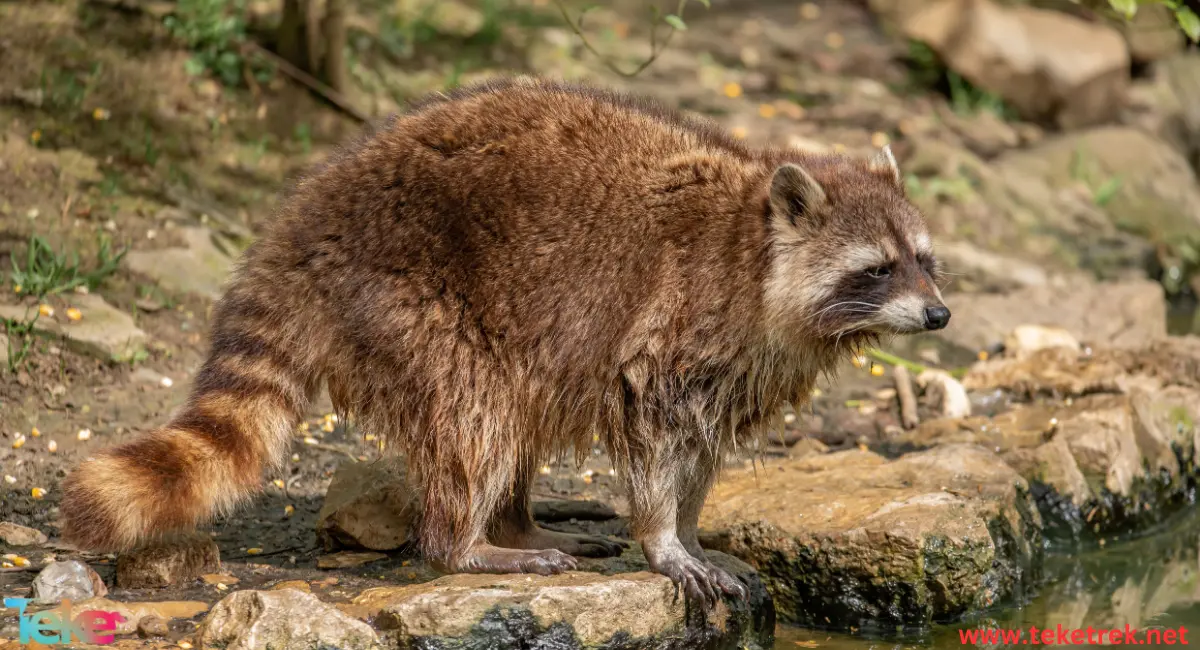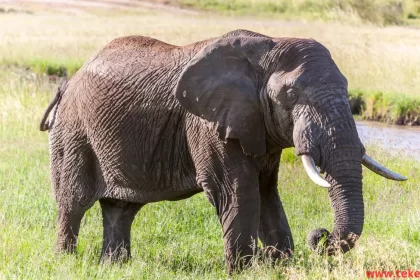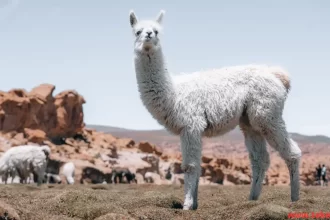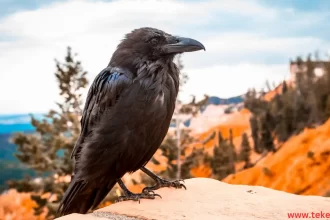The raccoon is a mammal belonging to the carnivore family. Raccoons are classified as cunning thieves due to their intelligence and cunning use to achieve what they want. Many people raise these animals in their gardens and enjoy spending quality time with them. In this article, we will talk on TekeTrek about raccoons, their natural habitat, diet, and how they can be raised.
Physical characteristics of raccoons
- The body length of a raccoon usually ranges from 45-60 cm. The average weight of a raccoon can vary depending on the species from 2-5 to 8-15 kilograms.
- The body structure of a raccoon somewhat resembles that of a fox or a dog.
- Raccoon paws are a distinctive feature of these animals; they have elongated fingers that somewhat resemble human hands.
- Raccoons climb trees easily and can handle many small objects, and they usually have excellent adaptability.
- The raccoon’s head is very broad, with a short and sharp muzzle, small and round ears.
- As for the tail, it is usually long and thin. In terms of color, all raccoons have a grayish-brown color, with their tails coated with horizontal lines of white and black.
- Raccoons can swim well even in cold water. This is facilitated by the special structure of their fur, which consists of a thick underlayer by 90%, as if it were specifically adapted to protect them from cold water.
What countries do raccoons live in?
- The native habitat of raccoons is North and South America. They can be found in forests from Canada to Argentina. Raccoons came to Eurasia with the Europeans’ discovery of America.
- Raccoon populations have been established in many European countries as well as in the Caucasus region.
Lifestyle of raccoons
- Raccoons are friendly, peaceful, active, and curious animals. However, despite their gentleness, they are not timid. They can bravely defend themselves in danger by biting or scratching.
- They can also threaten by growling and attempt to intimidate opponents. In particularly dangerous situations, raccoons may flee or feign death.
- Despite their friendliness and social interaction, raccoons prefer to live solitary lives in natural conditions, only coming together for mating and hibernation.
- Raccoons, like bears, enter a state of hibernation for the winter season, and the biological mechanisms of hibernation in raccoons are similar to those of bears. The duration of hibernation in raccoons depends on the length of the cold period.
- Canadian raccoons hibernate for the longest period, with hibernation lasting up to 5 months. However, raccoons living in warm tropical regions in Central America do not hibernate at all due to the lack of a winter season in their habitats.
- Raccoons are most active at dusk, meaning they are more active in the evening and at night. They prefer to sleep in their comfortable dens during the day. But as evening approaches, they come out in search of food.
Diet of raccoons
What do raccoons eat? In fact, Raccoons are carnivorous animals. They primarily feed on all kinds of berries, nuts, acorns, fruits, and small animals such as frogs, large insects, crayfish, shrimp, and small fish. They are very adept at catching small fish.
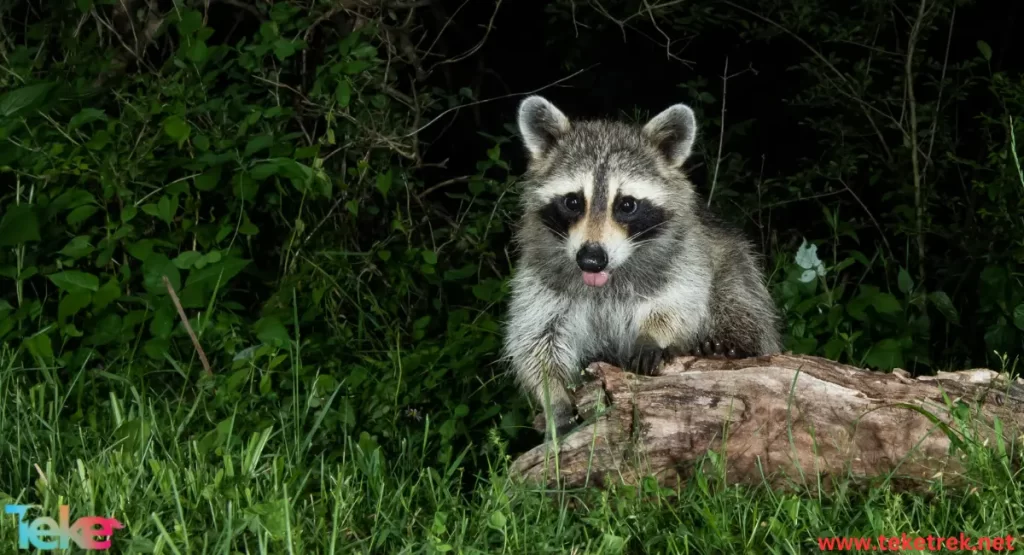
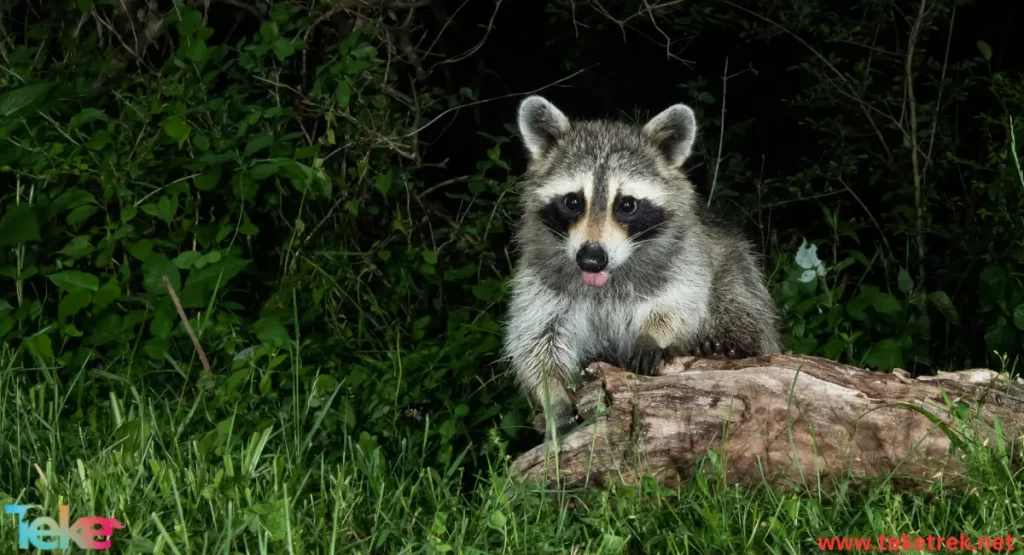
What are raccoons’ enemies?
- On the other hand, raccoons themselves can become prey for larger predators such as bears, wolves, lynxes, cougars, wolverines, and coyotes.
- In an attempt to escape their enemies, raccoons often resort to tricks. They may feign death, but when this trick fails, and escape is not possible, they resist fiercely and fight for their lives.
What are the species of raccoons?
There are several species of raccoons, including:
- Common Raccoon: This is the most widespread species that inhabits North and Central America, and recently in Europe.
- Crab-eating Raccoon: The distinctive feature of this raccoon is the unique pattern around the eyes, somewhat reminiscent of a bandit mask. Its fur is shorter, and its body is more streamlined. The Crab-eating Raccoon lives in the forests of Central and South America.
- Cozumel Raccoon: This species of raccoon is extremely rare, as it inhabits a limited area, specifically the small island of Cozumel in the Caribbean Sea. The Cozumel Raccoon differs from its other relatives due to its grayish-brown fur and yellowish tail.
- Guadeloupe Raccoon: This species of raccoon is currently endangered. It lives in the wetlands of Guadeloupe, preferring to settle in swampy areas, as well as near ponds, rivers, and lakes. Its appearance resembles that of the common raccoon.
Reproduction of raccoons
- Raccoons reproduce strictly once a year during the mating season, which occurs either at the end of winter or the beginning of summer (depending on the raccoon’s habitat, with mating season starting earlier as you move south).
- Raccoons do not have elaborate mating rituals; it’s quite straightforward. The male finds the female through scent and mates with her.
- The gestation period for female raccoons lasts for about two months. Birth usually occurs in an isolated location, typically in a hollow tree or an abandoned burrow of another animal.
- Raccoon mothers give birth to 3 to 8 raccoon kits at a time. The newborn raccoons are born blind and helpless, similar to small kittens, and initially receive complete care from their mother, who feeds them with her milk.
- Within just one month of their lives, they start growing rapidly. By the age of 4-5 months, they are already capable of obtaining food independently. By their first year, raccoons reach sexual maturity and become adults.
Fascinating facts about raccoons
- Raccoons are top-notch thieves and can steal just about anything. Moreover, they are extremely intelligent; scientists once conducted tests where raccoons figured out how to open ten locks in 30 minutes to get a reward.
- Interacting with raccoons can have a beneficial effect on children with autism; it helps them relax, hence the emergence of a special term, “raccoon therapy.
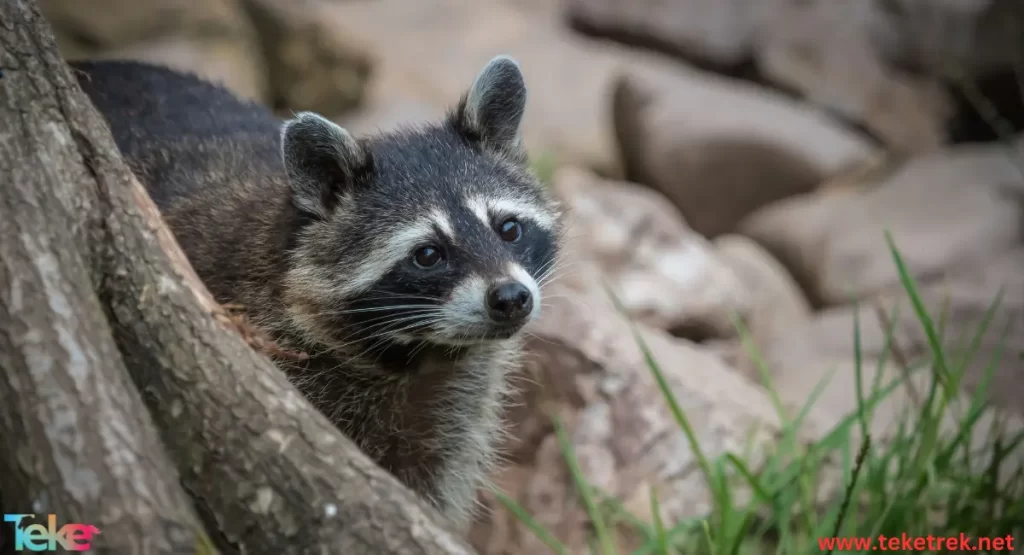
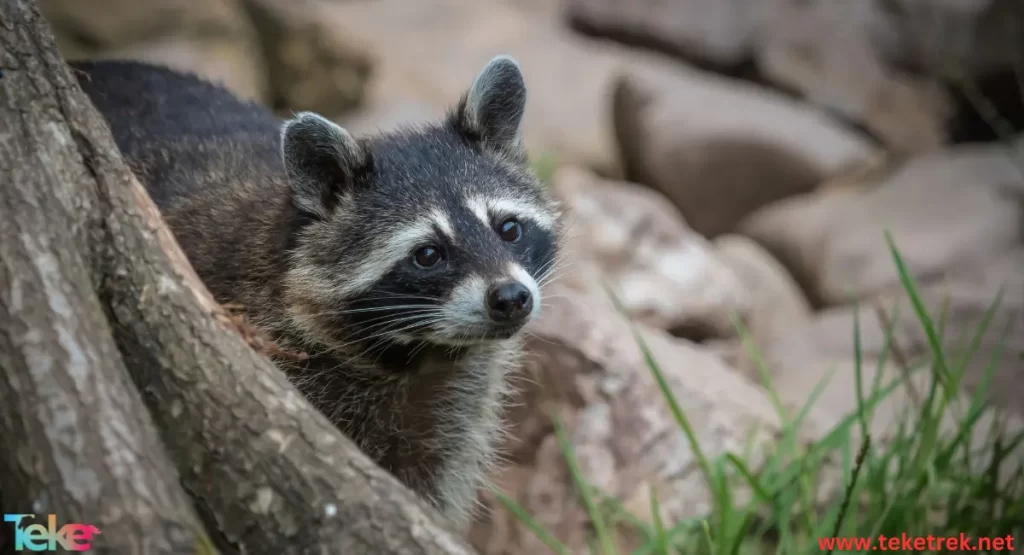
FAQ
- Are raccoons a danger to humans?
Raccoons are not necessarily dangerous, but they can exhibit aggressive behavior in some cases. Despite their intelligence and occasional gentleness, if they feel threatened or frightened, they may act aggressively to defend themselves. These aggressive behaviors can include defensive approaches such as biting, scratching, or clawing.
- What are the characteristics of a raccoon?
The characteristics of a raccoon include intelligence, curiosity, caution, and the ability to adapt to different environments.
- Does a raccoon emit an odor?
Yes, a raccoon may emit a foul odor when it feels threatened or stressed. This odor usually comes from scent glands near its anal region and is used as a means of self-defense.
- What is the habitat of the raccoon?
The original habitat of the raccoon is the North and Central American continent, where it is abundant in forests, urban areas, and farms. It has also spread to some regions in Europe and Asia due to human settlement and environmental overlap.
- Is the raccoon a predator?
Yes, the raccoon is considered a predator, as it feeds on a variety of food including small animals like insects, birds, and reptiles, in addition to fruits, nuts, and human waste
- How long do raccoons live?
The lifespan of a raccoon in captivity is typically 10-15 years. However, raccoons living in the wild rarely live for more than 10 years.
- Is the raccoon extinct?
Raccoons are threatened with extinction.
finally
- Raccoons can make wonderful pets due to their friendly nature. However, they shouldn’t be kept as pets if you live in a cramped apartment because these animals need space and won’t thrive in confinement like cats or dogs either.
- Since raccoons are very smart animals, you can have fun and play with them, but you should also be cautious because if a raccoon feels threatened, it can bite and scratch. Raccoons can be particularly aggressive during mating season.
- It’s also worth mentioning that raccoons can be extremely destructive, even as household pets. They can, for example, break all the dishes in the kitchen or throw an expensive TV. To avoid this, they should not be allowed to roam freely outside of their designated cage.
- Raccoons are crepuscular animals, meaning having such a pet in the house will require adapting to its natural rhythm. During the day, raccoons are likely to sleep, but they will be active in the evening and at night.

